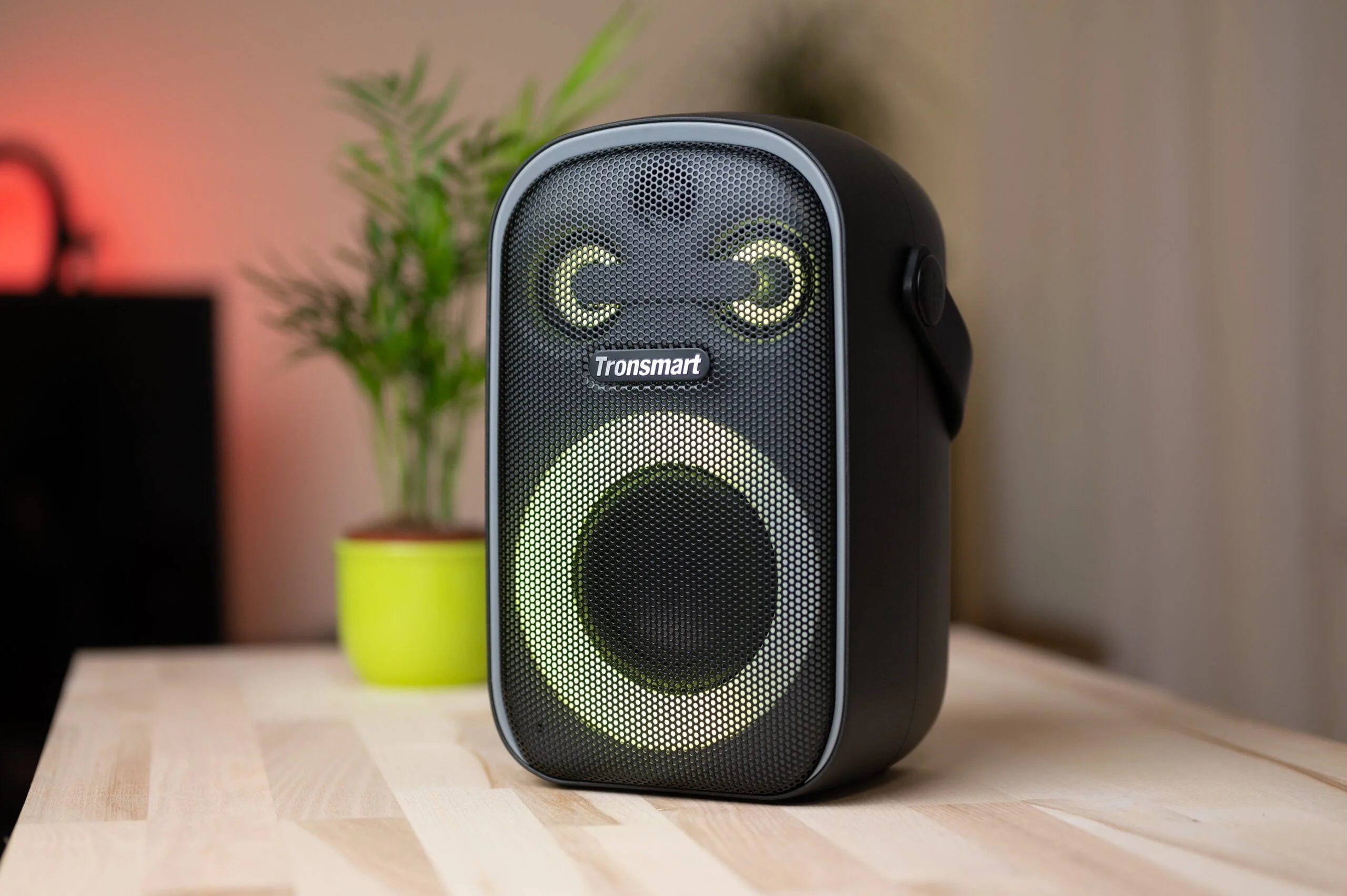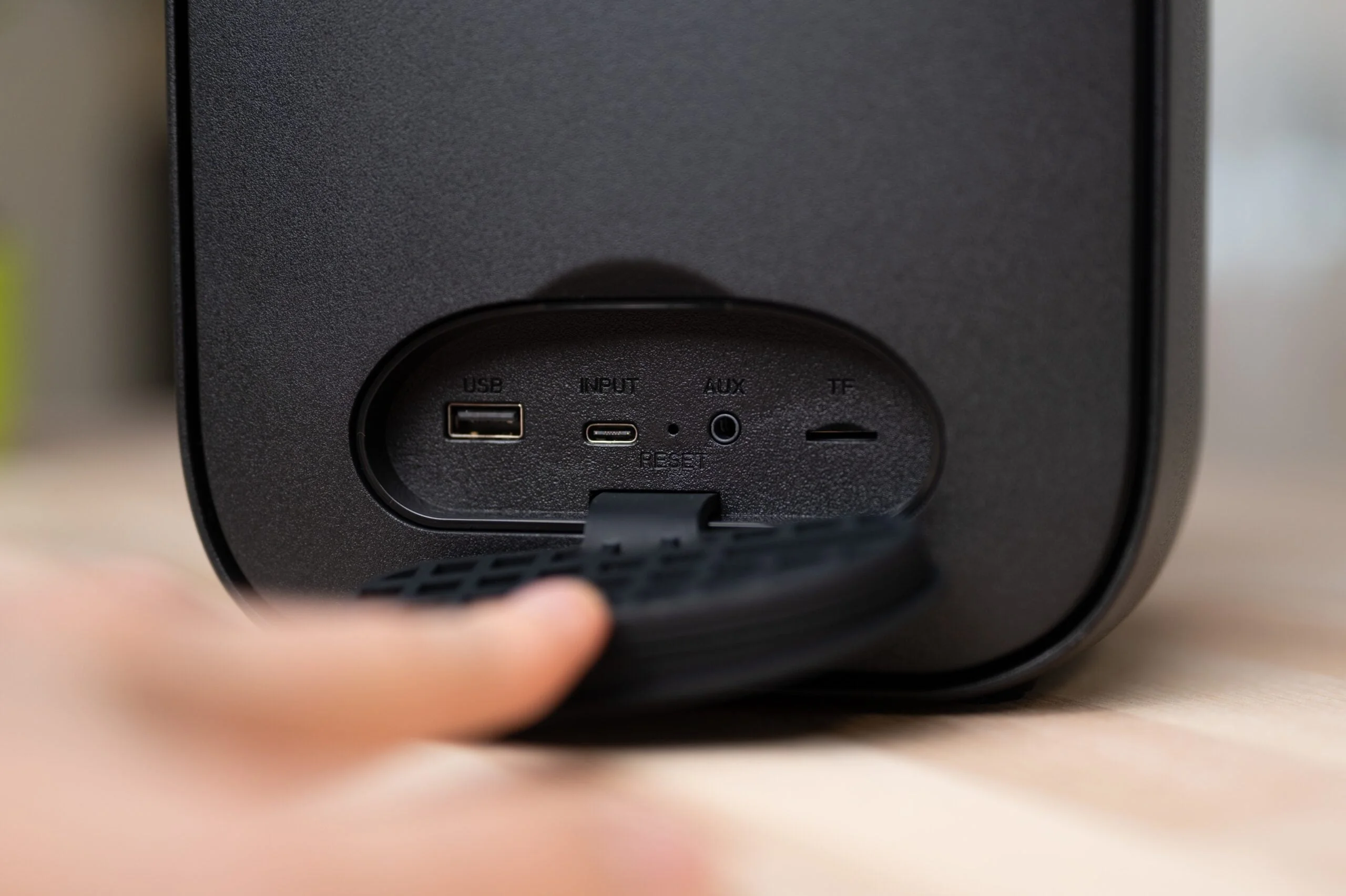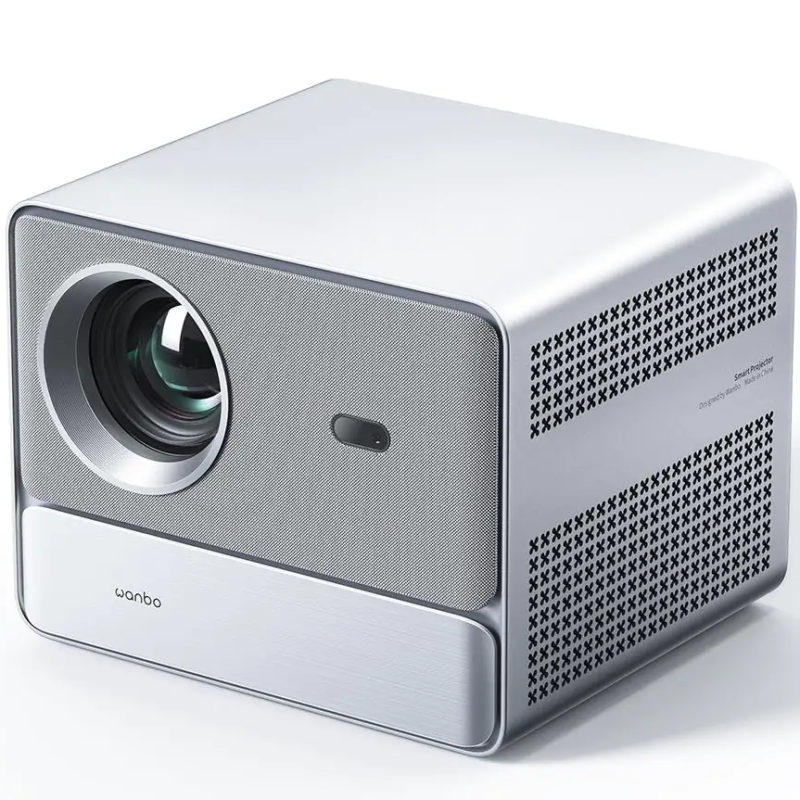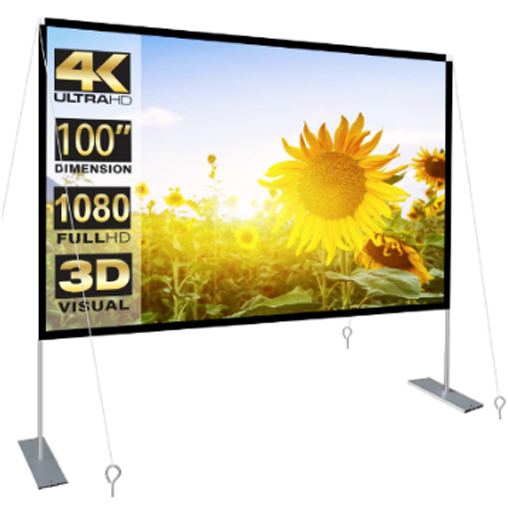Another face in the large Wanbo projector family is the DaVinci 1 Pro. This new model will have to prove its worth among a wide list of not-so-inferior Wanbo projectors. What factors can determine the decision to buy this or that Wanbo projector? We will consider all its pros and cons in this review.
Wanbo DaVinci 1 Pro
Assessment:
What did we like?
What didn't we like?
Unboxing
One of the many advantages of Wanbo projectors is their ease of use. As soon as you open the package, you won't see a bunch of wires and "paperwork". Everything is simple: a user manual, a power cord, and a control panel for navigating the projector's functions.

It is worth noting that the manufacturer did not include batteries for the remote control. It often happens that the product accidentally falls somewhere while traveling to the customer's door, but this way you can be safe. The projector and other parts are protected by a sturdy cardboard box, and everything inside is wrapped in foam several centimeters thick.

First impressions
The projector inside the package pleasantly surprises with its simplicity and solidity. When you look at and touch the projector, its modern design attracts the most attention. Although the details of the housing itself are made of thin plastic, the overall look of the projector is greatly enhanced by the material-covered front part.

The size of the projector, compared to other Wanbo series projectors, is average, so you may have to turn your head to where you can place the device more conveniently and not take up much space. Well, the small weight of the projector will not cause inconvenience when lifting it and carrying it to another place. However, when you take the projector in your hands, you feel that the product is solid and assembled quite qualitatively.

Design
Wanbo manufacturer applies a minimalist, yet modern design to its products. The appearance of the projector is dominated by soft, single colors, which allows the device to adapt to many home interior designs. Part of the body is covered with a fabric finish, which looks really attractive, but due to the light color it can easily get dirty, and cleaning a fabric part is more difficult than plastic.

Features of use
When you start using the DaVinci 1 Pro, you will notice that there are no special conditions for adjusting the projector. A very big plus is that after turning on the device, the brightness, image size and viewing angle are adjusted thanks to the built-in front camera. This process takes only up to 10 seconds. This is very helpful in calibrating the device and quickly preparing it for use.

To make it twice as fast to turn on and use the device, all automatic calibration functions can be disabled. Once this is done, all that remains is to adjust the image to your preferences using a variety of settings. It is important to note that this device can be used not only on a table, but also mounted on a stand or ceiling.

Once you pair the remote with the device itself, you'll be greeted by the Google TV Android 11 operating system with a wide range of apps and fast performance. The remote itself is convenient, supports the Google Assistant function, and has quick links directly to Netflix, Youtube, Prime video, and Disney+ apps.

This device supports both Android and iOS devices. You can also expand the projector's capabilities by displaying the screen of your phone, tablet, or computer. Android devices can be connected using the built-in Google Chromecast app.

Although everything in the everyday world of technology relies on internet access, you will find HDMI and two USB ports on the back of the Wanbo projector. Thanks to them, you can view images and photos from a USB flash drive, and using the HDMI port, connect a computer or speakers.

Video quality
The manufacturer declares a brightness of 600 ANSI lumens and a maximum resolution of 1080p 60 HZ. Practice shows that the brightest image can be reproduced only in dim or completely dark rooms. In a bright room, the image broadcast by the projector may not be satisfactory, as the image becomes harder to see and pale.

Also, when the projector's image is maximized, the image automatically becomes somewhat blurry and less detailed. Although the basic calibration of the device is done automatically, there are quite a few image adjustment functions. If you want to individually adjust the image, you will not have any problems, since there is both adjustment of the tint itself, image direction (vertical, horizontal), and angle (to tilt the image without moving the projector itself).

Color rendering
The colors displayed by the projector seem a bit pale at first glance, but the sharpness of the details saves the situation. After testing different video materials, the projector reproduces one image in great detail, but the sharpness can sometimes be too much and the image becomes unnatural and overexposed. Overall, I would like the colors to be a bit brighter and softer, such a color combination would reproduce a much more natural image.

When mirroring the phone screen, the image quality drops slightly, but the operation itself is very fast. When using Google Chromecast, both devices must be connected to the same WiFi network. This ensures screen sharing without any delays or crashes. When using both already installed apps for watching movies and when broadcasting images from a USB flash drive or HDMI cable, the quality is really satisfactory and the image is reproduced with contrast.

Sound quality
The left side of the device has two Hi-Fi 8W speakers, which, given their current location, sound really good both when watching movies and listening to music. The listening experience can be adjusted with the sound settings already saved in the device's memory or create the desired sound individually with the help of the graphic equalizer.

It is worth noting that the sound emitted by the speakers is only from one side, so the sound becomes muffled when the listener is on the opposite side. Also, when the volume is increased above 70 percent, some sound distortion and vibration sounds from the projector body are heard.

However, these disadvantages can be overcome by the output for external speakers. The projector connects to external devices via Bluetooth, has a 3.5 mm AUX output, as well as an HDMI connector. All these additional features only improve the user experience when watching movies, playing games, or listening to music.

Comparison with Wanbo Mozart 1
The Mozart 1 projector, which has already been in our sights, is on par with other Wanbo products. After testing the capabilities of this device, it is clear that this projector is not inferior to the Wanbo DaVinci 1 Pro we reviewed.

First of all, the Mozart 1 has a resolution of 900 ANSI lumens, which allows for a brighter and higher quality broadcast image. The difference is most noticeable in daylight. When comparing the capabilities of both projectors in the dark, there is still a noticeable difference in color brightness and detail.

Wanbo Mozart 1 reproduces a brighter and softer color combination, which allows you to recreate a much more natural image. However, Wanbo DaVinci 1 Pro reproduces a slightly paler, but sharper color palette, and this may look a little artificial. The principle of operation of both devices is quite similar, but the customer is always more intrigued by the newer operating system - this model runs Android 9 OS.
Both models have a wide range of apps to choose from, but the DaVinci 1 Pro goes one step further. The Mozart 1 does not have a NETFLIX license, so the viewer will have to watch movies in slightly lower quality than with the DaVinci 1 Pro.

Considering that movies can be watched on other platforms, this is not such a big problem. The Mozart 1 is a more compact and differently shaped projector. If you want to take up less space at home, this is a huge plus, since the DaVinci 1 Pro is heavier and larger.

When it comes to sound quality, the Mozart 1 projector comes with a higher-end sound system. The speakers in this model are almost twice as loud and clear, so if you prioritize sound quality, the Mozart 1 will definitely not disappoint.

The remotes on these models are the main control tool for the device, as there are no calibration buttons on either projector body. Both models have brightness adjustment buttons, but the Mozart 1 model does not have shortcuts to apps, the layout is completely different and not as user-friendly as the DaVinci model.

Summary
The price of both projectors is similar - one of them is more attractive with its more compact size, higher contrast image, and fairly good audio system, while the other can offer a more sophisticated operating system and wider range of application options.

Summing up the experience with these two projectors, it can be said that both devices are definitely worth their price. For just 300 euros, the customer gets a really high-quality image, fairly good sound, and a very modern and beautiful interior detail that will definitely make the viewer feel like they are in a movie theater.

Verdict
Wanbo has a wide range of projectors, dominated by fairly low prices. In addition to image and sound quality, design and operating system, price is one of the main conditions when choosing a projector. If a customer is looking for a projector under 300 EUR, the Wanbo DaVinci 1 Pro can definitely be worth considering. However, for this amount, the Wanbo manufacturer can offer a projector with both better image and better sound.

Having personally tested projectors of a similar price, my attention turns to the Wanbo Mozart 1. However, considering the price-quality ratio, the Wanbo Mozart 1 provides a higher quality movie viewing experience with its good sound system, compact size, and more natural image.

































